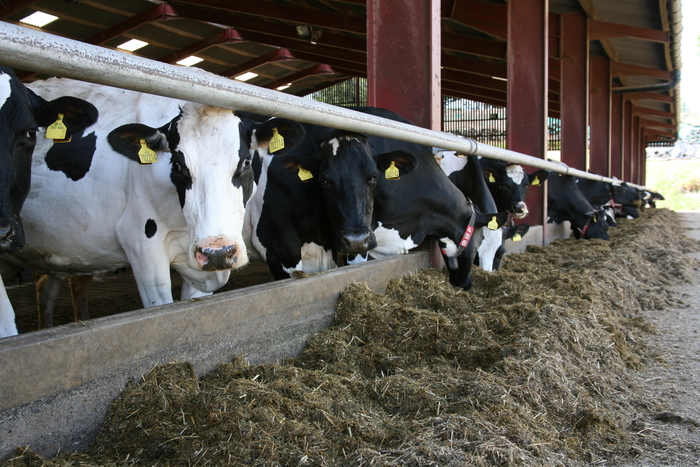2019 looks set to be a good winter for many dairy farmers with better quality silage and increased stocks pointing towards reduced feed costs and improved production from forage.
Trouw Nutrition GB operates the UK’s largest feed and forage analysis laboratory, analysing grass, wholecrop and maize silage samples from across the UK. Commenting on the results of 4500 first cut grass samples, 1000 second cuts, and over 500 wholecrop samples analysed so far this year, Dr Liz Homer, ruminant technical development manager at Trouw Nutrition GB says the prospects for the winter are more encouraging than for several years.
“Good weather and the adoption of multicut systems by many farmers mean that stocks are generally higher and the quality is looking very good. Together these should allow higher forage intakes, improved rumen performance and the potential to reduce purchased feed costs per litre.
“The high quality seen in the early first cuts has continued into later cuts (see table). Grass silage is generally drier with good energy and protein contents while wholecrop has a higher starch content but overall slightly depressed energy levels.”
“While silages are generally analysing better, there is a range in the results meaning it is essential farmers get their own clamps analysed regularly. Then the priority must be to understand how the forages will feed and to balance them appropriately.”
Dr Homer says that on average grass silages have higher NDF content than in 2018 although still not extremely high. However, levels of lignin are high this year. She warns that higher lignin content makes the fibre less digestible which could lead to reduced rumen passage rates, lower feed intakes and lower production if the diet is not carefully balanced.
“These drier, high lignin silages will be less fermentable with low rapidly fermentable and total fermentable carbohydrate levels. So they need to be balanced with sources of rumen fermentable energy and fermentable protein to improve rumen efficiency. Energy sources such as molasses and ground cereals will help supply the carbohydrate required while soya and rape will provide the necessary protein.
“Although less wholecrop appears to have been made, those farmers who made any will find it will balance grass well, providing rapidly fermentable carbohydrate from starch, and maize should do a good job too when it is available.
“Encouragingly, the acid load and fibre index of grass silages suggest that rumen health should not be too much of an issue, meaning cereal levels can be increased without the risk of acidosis, provided farmers avoid feeding cereals in large feeds which could precipitate a pH drop.”
With most farms entering the winter with high stocks, Dr Homer says there should be the opportunity to drive forage intakes. She comments that each additional 1kg forage DM/day would allow a reduction of 0.8kgDM from concentrates, helping increase margins.
To maximise intakes she stresses the need to avoid the TMR or clamps heating, to mix the diet correctly, to push feed up regularly and to optimise total ration dry matter at 45-50%.
“It will also be important to change between clamps and cuts carefully. We are seeing big differences in digestibility between first and second cuts, irrespective of whether first cut was taken early or at a typical time, with later cuts being less digestible. This could lead to reduced intakes when clamps are changed unless diets are modified carefully.
“Our results suggest dairy farmers could be on the brink of a more profitable winter, but the imperative will be to maximise the value in the clamp by balancing diets carefully, targeting higher forage dry matter intakes and having faith in the forage and not over-supplementing diets.”


